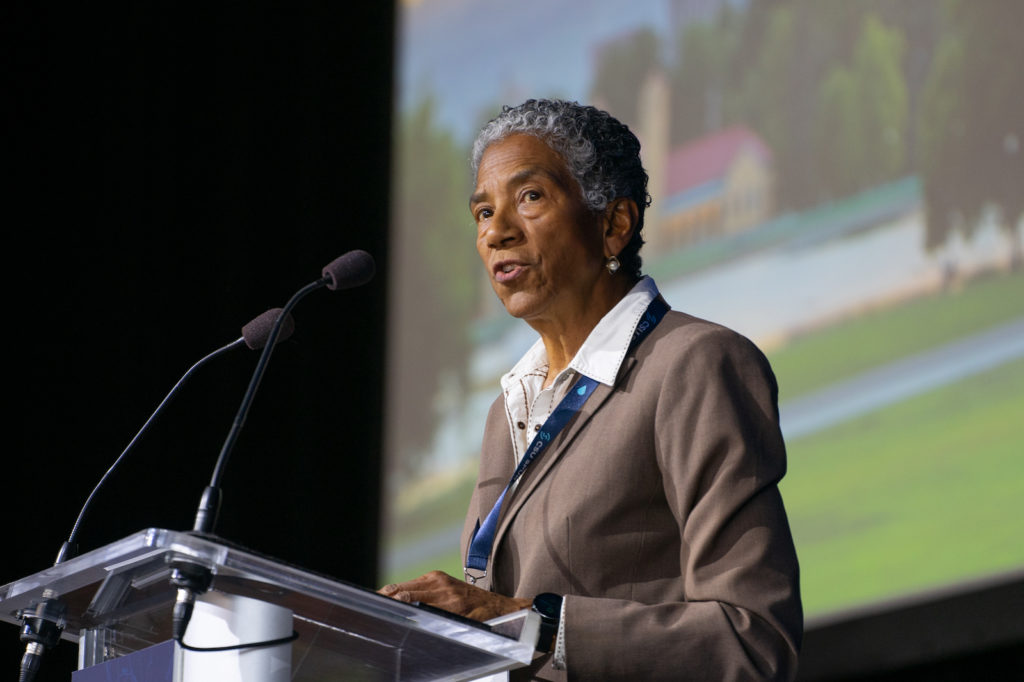
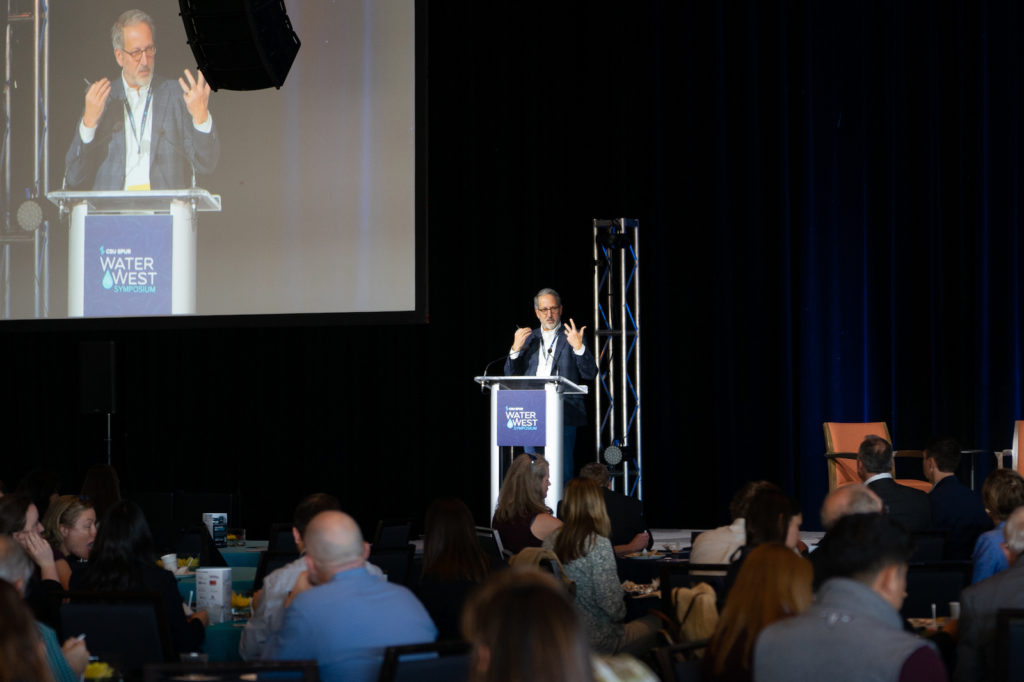
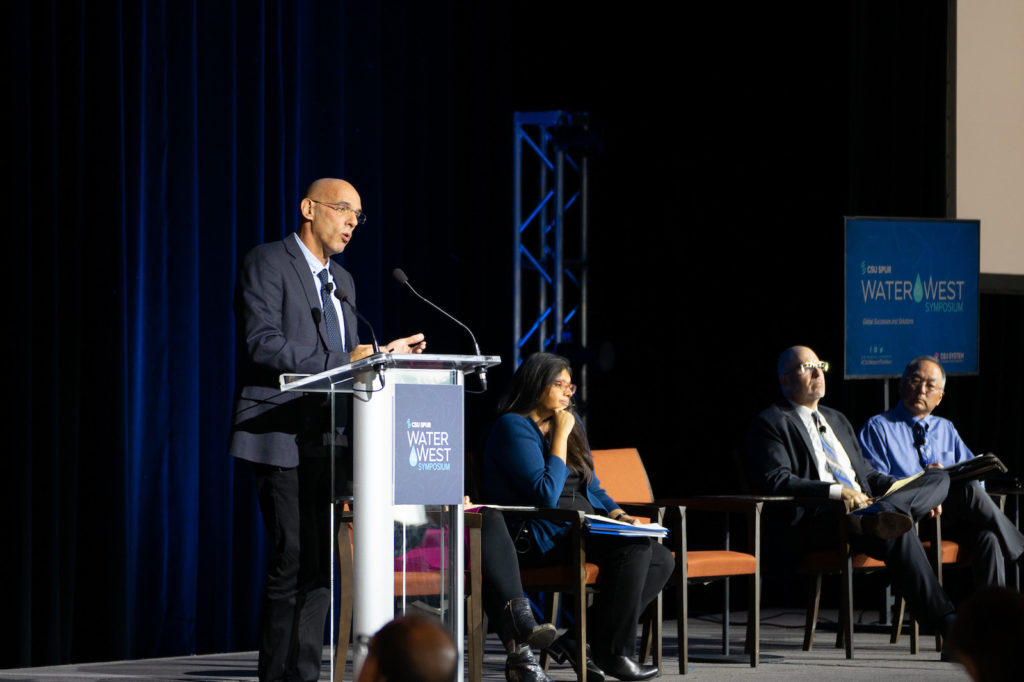
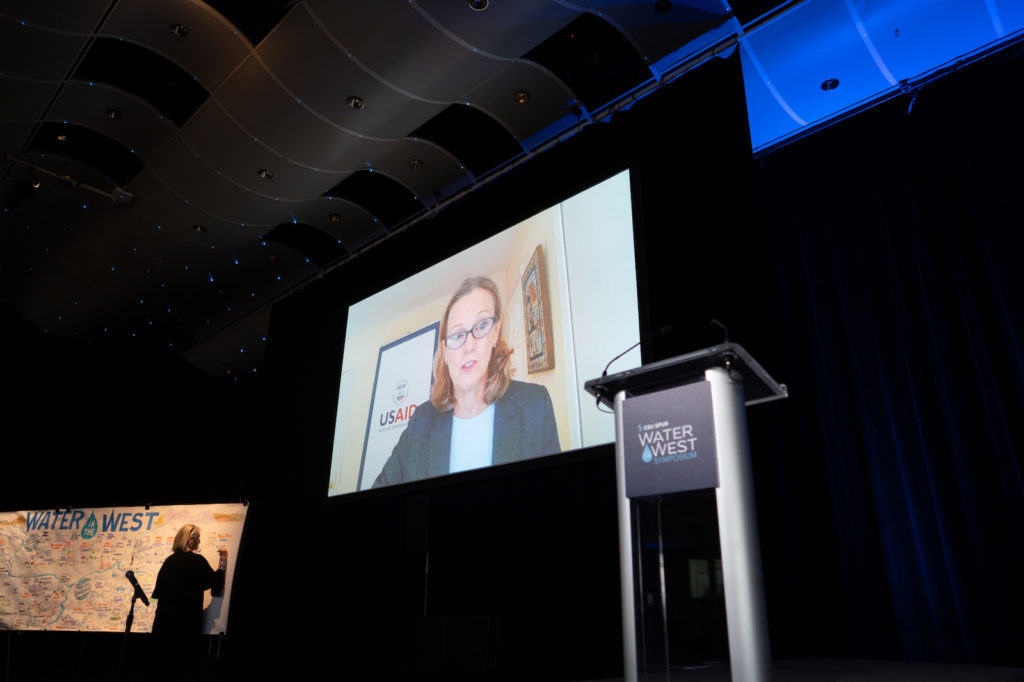
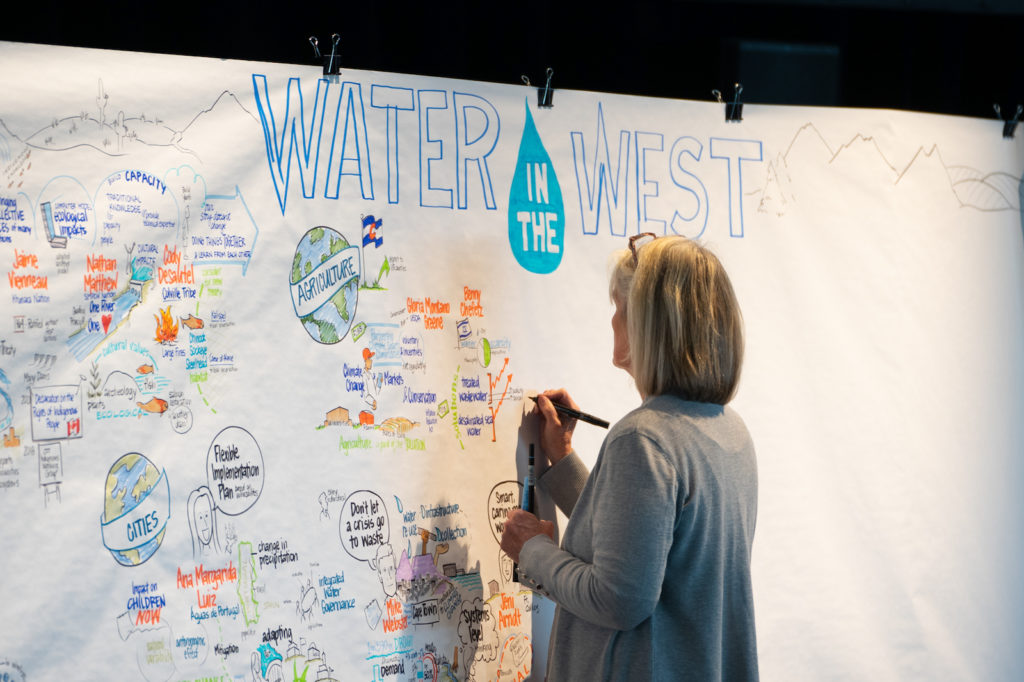
The 2022 CSU Spur Water in the West Symposium opened with a dose of reality.
Jay Famiglietti, executive director of the Global Institute for Water Security at the University of Saskatchewan, shared an image showing how the global availability of freshwater has changed over the past two decades. On his global water map, blotches of blue showed regions that have gotten wetter, while intensifying patches of red pointed to areas where fresh water is becoming increasingly scarce.
Of particular significance to the crowd of more than 200 attending the two-day symposium in downtown Denver, were angry red blisters covering much of the western United States. These represent the decline of the Ogalala and Central Valley aquifers, long tapped to counter the aridity of states from the Great Plains to the southwest and the Pacific Ocean.
“Basically, I’m telling you, the land is drying,” Famiglietti said. “Wet areas are getting wetter, and dry areas are getting dryer. This is happening now.”
If Famiglietti’s map contributed to an overall sense of urgency at the CSU System’s annual gathering of policymakers, residents, and leaders from the agriculture, business, and non-profit sectors, his remarks and those of a succession of experts at the event also spoke to the potential to address many western and global water challenges through coordinated action, creativity, and a willingness to adapt.
Several speakers offered a glimpse of what is possible in the face of true climate extremes. Israel, for example, is a dry country with twice Colorado’s population living in an area less than a tenth the state’s size. Benny Chefetz, a professor of environmental and soil chemistry at The Hebrew University of Jerusalem, described Israel’s evolving approach involving conservation, the desalination of sea water, and the recycling of wastewater. Combined, all of these have allowed Israel to meet the needs of residents while supporting a thriving agriculture sector.
Israel’s success growing avocados and citrus illustrates the complexities involved in this approach. Recycled wastewater expanded agricultural possibilities, and yet researchers confronted a puzzle as the health of avocado and citrus plants deteriorated over time. The culprit turned out to be boron, a byproduct of detergents and washing powders that remained in treated wastewater and was accumulating in the plants’ leaves. The country’s response was to ban detergents with boron, and now the avocado and citrus crops are thriving.
The fact that Israel is able to produce most of the fresh produce and fruit consumed in the country is significant, both in terms of food security and in knowing how that food is produced, Chefetz said, emphasizing the importance of local production. “We have to think in a more global way about the food trade,” he said.
Water scarcity in Israel has also contributed broadly to a focus among entrepreneurs on finding ways to do more with less. “Let’s remember that water is fixed and limited, exactly like our time,” said Gili Elkin, co-founder and general partner of the ICI Fund. “We need to manage it efficiently.”
Elkin, whose Colorado-based investment fund is focused on bringing technologies developed in Israel to the United States and other countries, spoke during a panel discussion on innovation and investment. She described sophisticated approaches, including one that involves the use of artificial intelligence and sensors to fine-tune irrigation systems, and which has resulted in increased yield and reductions of water use by a quarter or more.
During the same panel, Will Sarni, founder and CEO of Water Foundry, described himself as a “raging optimist” when it comes to finding solutions to water issues: “I view water as a risk, but also as an opportunity. What can we do together? We can solve these challenges.”
A similar message came through during a panel discussion on cities involving Fort Collins mayor Jeni Arndt, Ana Margarida Luís, of Águas de Portugal, and Mike Webster, executive director of Cape Town’s Water and Sanitation Directorate.
Webster described the “Day Zero” crisis of five years ago, during which the South African city of more than 4 million people faced the prospect of running out of water.
“Once the city got its act together and could communicate with the public, the public really came on board,” Webster said, describing a reduction in per capita water use of about 50%. “That means everyone, individually, responded.”
The reality is that such adaptation may be necessary in the face of climate change, according to Luís, of Portugal.
“The planet is okay with climate change,” she said. “It can handle any climate, but we, as human beings, cannot.”
While technology will play a role in addressing many water challenges, Arndt emphasized the human dimension. “We can knock an asteroid off course,” she said. “The real thing that can hold us up in any solution is the human aspect: can we collaborate enough, share enough?”
The human aspect was a major element of panels focused on international water solutions. A discussion on the first day of the symposium focused on renegotiation of the Columbia River Treaty, which the United States and Canada signed in 1961 and governs the construction and operation of dams on a river that begins in the mountains of British Columbia, flows south through eastern Washington, and then turns west on its way to the Pacific.
Left out of that treaty were the perspectives and interests of Native American tribes that have relied on the river and its tributaries over centuries. Nathan Matthew, of Simpcw First Nation in British Columbia, talked about the involvement of those communities in the renegotiation process, and his hopes for the restoration of salmon runs that played a central role in many dimensions of tribal life.
“We’d like to see the system operated so those values are reflected,” Matthew said. “We expect one day to have salmon back in our lives.”
A panel on the second day of the symposium centered on negotiations involving the United States and Mexico, both of which rely on water from two rivers, the Colorado and Rio Grande, that have their headwaters in Colorado. Edward Drusina, of the United States, and Roberto Salmon, of Mexico, talked about their roles representing each country on the International Boundary and Water Commission. It took time to overcome obstacles, build trust, and make progress, they explained. And yet they developed an apparent rapport.
“We had two different languages, two different cultures, two ways of doing things, and even two different times to have lunch,” Salmon said. “The only thing we could all agree on was that we spoke the same technical language. The technical aspect was our common ground.”
This year’s Water in the West Symposium took place Nov. 2-3, just weeks before the Spur campus’s third building, Hydro, opens in January. In coming years, Hydro will house the symposium and a range of programs and initiatives focused on water research, conservation, and education.
In remarks opening the event, CSU System Chancellor Tony Frank referenced the opening of Hydro and CSU’s long history of addressing water challenges. He said the guiding question—“What are we going to do about this problem?”—is still one that demands an answer.
Looking ahead to next year’s event, Jocelyn Hittle, the CSU System’s associate vice chancellor for CSU Spur and Special Projects, said that urgency is likely to remain.
“Water in the West encourages people in the American West to look for solutions in other sectors and geographies that can be applied here,” Hittle said. “This Symposium has opened the door to ideas from around the world, and will continue, in years to come, to bring ideas that can inspire ongoing solutions to our regional water challenges.”
About CSU Spur
CSU Spur is a new, free educational year-round public life-long learning destination in Denver focused on engaging PreK-12 students, families, and visitors around food, water, and health. CSU Spur showcases the work of the CSU System campuses: CSU, CSU Pueblo, and CSU Global, and offers degree programs that originate from the campus offerings. Spur is built upon the land-grant mission of access to education and the belief that students can be anything they want to be. To inspire learners of all ages to engage in important world issues, CSU Spur brings together scientists to collaborate, puts science on-display, and showcases career paths. The CSU Spur campus provides immersive learning experiences and cutting-edge research across three buildings: Vida, Terra, and Hydro. Learn more at CSUSpur.org.